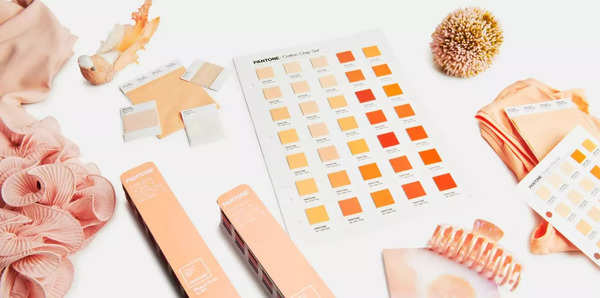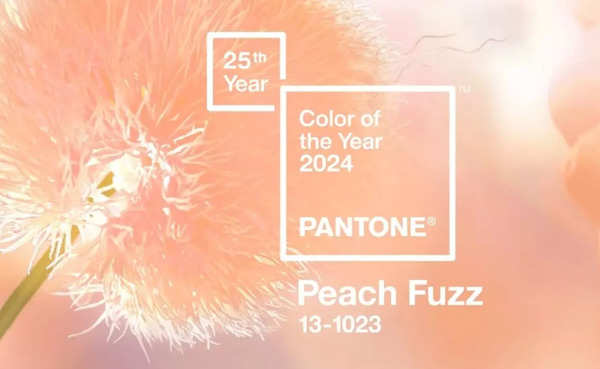Why is Pantone Colour of the Year regarded so highly in the fashion industry? – Times of India

The Pantone Color Institute
Founded in the 1960s, the Pantone Color Institute has emerged as the global authority on color. Renowned for its colour matching system, Pantone provides standardized colour swatches, ensuring consistency across various industries, including graphic design, printing, and, of course, fashion. The Colour of the Year is a culmination of extensive research, trend analysis, and cultural considerations, making it a reflection of the current zeitgeist.
Colours have the power to evoke emotions, express cultural shifts, and convey societal moods. Pantone’s meticulous process in selecting the Colour of the Year takes into account global influences, including art, design, travel, technology, and socio-economic factors. By distilling these diverse elements into a single shade, Pantone captures the essence of the contemporary cultural landscape.

Fashion as a cultural mirror and influence of colour
Fashion, as an integral part of culture, mirrors societal shifts, values, and aspirations. The Colour of the Year, therefore, serves as a catalyst for change within the fashion industry. Designers, retailers, and consumers eagerly embrace this annual proclamation as a guiding principle for creating and curating fashion collections that resonate with the prevailing cultural narrative.
The Pantone Colour of the Year has a ripple effect throughout the fashion design process. Designers, both high-end and high street, incorporate the chosen hue into their collections, offering consumers an opportunity to embrace the trend. The color serves as a unifying element across runways, lookbooks, and retail spaces, creating a visual dialogue that transcends geographical and cultural boundaries.
Consumers, ever attuned to the language of fashion, eagerly adopt the Colour of the Year into their wardrobes. The proclamation serves as a catalyst for retail trends, prompting fashion enthusiasts to seek out and invest in garments and accessories in the chosen hue. Retailers strategically leverage the color trend, creating curated displays and marketing campaigns that capitalize on the consumer’s desire to stay fashionable and on-trend.
5 street fashion trends that have been making waves in India
A tool for creativity
Beyond its commercial impact, the Pantone Colour of the Year acts as a catalyst for creativity and collaboration within the fashion industry. Designers, influencers, and brands across the globe engage in a collective exploration of the chosen color, interpreting it in diverse and innovative ways. This collaborative spirit fosters cross-industry pollination and enriches the visual landscape of the fashion world.
One of the reasons Pantone’s Colour of the Year is highly regarded is its ability to be both current and timeless. The selected colour often has a versatile quality that seamlessly integrates into various fashion styles and aesthetics. This adaptability ensures that the Colour of the Year remains relevant throughout the seasons and continues to inspire designers and consumers alike.
Photo Courtesy: Pantone Institute of Color
function loadSurvicateJs(allowedSurvicateSections = []){ const section = window.location.pathname.split('/')[1] const isHomePageAllowed = window.location.pathname === '/' && allowedSurvicateSections.includes('homepage')
if(allowedSurvicateSections.includes(section) || isHomePageAllowed){ (function(w) { var s = document.createElement('script'); s.src="https://survey.survicate.com/workspaces/0be6ae9845d14a7c8ff08a7a00bd9b21/web_surveys.js"; s.async = true; var e = document.getElementsByTagName('script')[0]; e.parentNode.insertBefore(s, e); })(window); }
}
window.TimesApps = window.TimesApps || {}; var TimesApps = window.TimesApps; TimesApps.toiPlusEvents = function(config) { var isConfigAvailable = "toiplus_site_settings" in f && "isFBCampaignActive" in f.toiplus_site_settings && "isGoogleCampaignActive" in f.toiplus_site_settings; var isPrimeUser = window.isPrime; if (isConfigAvailable && !isPrimeUser) { loadGtagEvents(f.toiplus_site_settings.isGoogleCampaignActive); loadFBEvents(f.toiplus_site_settings.isFBCampaignActive); loadSurvicateJs(f.toiplus_site_settings.allowedSurvicateSections); } else { var JarvisUrl="https://jarvis.indiatimes.com/v1/feeds/toi_plus/site_settings/643526e21443833f0c454615?db_env=published"; window.getFromClient(JarvisUrl, function(config){ if (config) { loadGtagEvents(config?.isGoogleCampaignActive); loadFBEvents(config?.isFBCampaignActive); loadSurvicateJs(config?.allowedSurvicateSections); } }) } }; })( window, document, 'script', );
For all the latest lifestyle News Click Here

